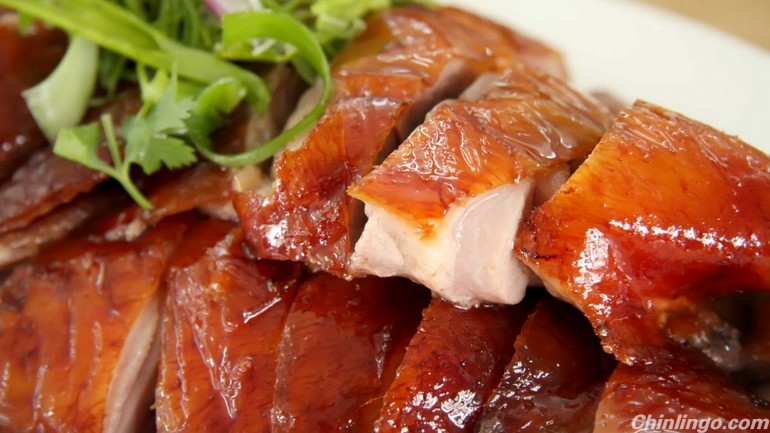
Most Americans love Chinese food, whether dining in a restaurant or
from a slew of those little, folded white takeout boxes with the wire
handle. However, the Chinese food found in most casual Chinese
restaurants in the U.S. is very far removed from the authentic cuisine
eaten daily by most people living in China.
There are many differences between authentic Chinese cuisine and
Westernized Chinese food. From ingredients to cooking methods to popular
dishes, the differences are numerous. In general, Westernized Chinese
food is considered to be more bland and fattening than authentic Chinese
food.
While you can likely find authentic Chinese restaurants or authentic
dishes in restaurants around the country, most U.S. Chinese restaurants
offer Westernized Chinese food. While Westernized dishes are far removed
from the authentic dishes they once were, some Western Chinese food
dishes are actually a complete invention!
How the Changes Came about
America was once the Melting Pot, with populations from Europe, Asia,
and other continents all joined together. Most cultural groups brought
their customs and their cuisines; both changed and adapted over the
years to turn into something much different.
According to the Smithsonian’s National Museum of American History, the history of Westernized Chinese food started in San Francisco in the mid-1800s with Chinese immigrants who came to the U.S. looking for work.
According to the Smithsonian, many Chinese workers had trouble
finding work; opening a restaurant for the Chinese population was an
avenue many took simply to make a living. Eventually, Chinese cuisine
made its way into the mainstream and was changed along the way to
reflect Western tastes and regional influences.
Cooking Methods
One main difference between authentic Chinese food and the fare
offered in American casual Chinese restaurants is the cooking methods
used. The food found in Western Chinese restaurants is mainly cooked
through frying. Many dishes are cooked using various frying methods in a
wok or a deep fryer.
Traditional Chinese food may be cooked using any of the various
frying methods, but it is not the main way such cuisine is cooked.
Methods such as stewing, braising, baking, steaming, boiling, and even
fermenting are commonly used in authentic Chinese cuisine.
Furthermore, breading and deep-frying items is not really found in
authentic Chinese food; such cooking is the equivalent of chicken
nuggets, onion rings, and mozzarella sticks.
Ingredients
Another big difference between authentic and Westernized Chinese food
is the ingredients used. Westernized Chinese food focuses on dishes
with a main meat; ingredients like rice and vegetables are sides or
fillers.
With authentic Chinese dishes, the opposite is true. Ingredients like
vegetables, rice, noodles, and soybeans are those that are most often
used. Some ingredients found in Western Chinese food are not used in
authentic Chinese cooking as a general rule; such examples include
broccoli, carrots, onion, tomatoes, and dairy product.
Westernized Chinese food features vegetables and meats that are
common in Western cuisine and acceptable for eating in Western culture.
Meats are usually beef, pork, or chicken. While you can find regional
Western cuisine that includes stranger meats—like pig ears—most Western
cultures are pretty conservative in the meats they eat.
Authentic Chinese cuisine uses a wider variety of protein sources,
like tofu, and their other meat sources would seem downright unsavory to
most Western palates. Examples include snake, chicken feet, duck blood,
jellyfish, and more that Westerners generally wouldn’t choose to eat.
Western Chinese food also uses some seafood ingredients, but it is
nowhere near the diversity of seafood ingredients found in traditional
Chinese food.
Authentic Chinese food also uses different spices, especially more
fragrant ones, while Westernized Chinese food focuses heavily on salt
and sugar.
Common Westernized Chinese Dishes
Many of the most popular dishes in casual Westernized Chinese
restaurants aren’t eaten in China at all. For example, Sweet ‘n’ Sour
Chicken or Pork has no equivalent in traditional Chinese cuisine. In an
article about Western Chinese food not eaten
by the Chinese on Eater.com, the author, Mary Kong, points out the
obvious connection to U.S. Southern cooking in these two dishes where
the meat is breaded, deep-fried, and served with a sweet sauce.
Crab Rangoon is another example of Westernized Chinese food. A Wonton
shell is filled with imitation crab meat and cream cheese, and then it
is deep-fried. Cream cheese is not a commonly used Chinese ingredient.
The dish Beef and Broccoli is yet another example; broccoli isn’t
used anywhere in authentic Chinese cuisine. Similarly, fortune cookies
are a completely American invention as well.
Common Authentic Chinese Dishes
There are many different kinds of authentic Chinese cuisines, as the
regionalism of the country contributes to different languages, customs,
and cuisines. The author of the Eater.com article above wrote a similar
article about dishes
that the Chinese actually do eat. Kong, a Chinese-American, claims that
most readers would turn green if they knew what most Chinese people ate
at home!
Some common meals with different ingredients include Peking Duck,
Jellyfish, Phoenix Claws made from chicken feet, and Sea Cucumbers. Yet
Western tastes adapt to new flavors and ingredients easily, so it may be
only a matter of time before Phoenix Claws are offered at every Chinese
take-out restaurant and buffet in America!



 闽公网安备 35020302035673号
闽公网安备 35020302035673号
0 responses on " Differences between authentic Chinese food and American knockoffs"